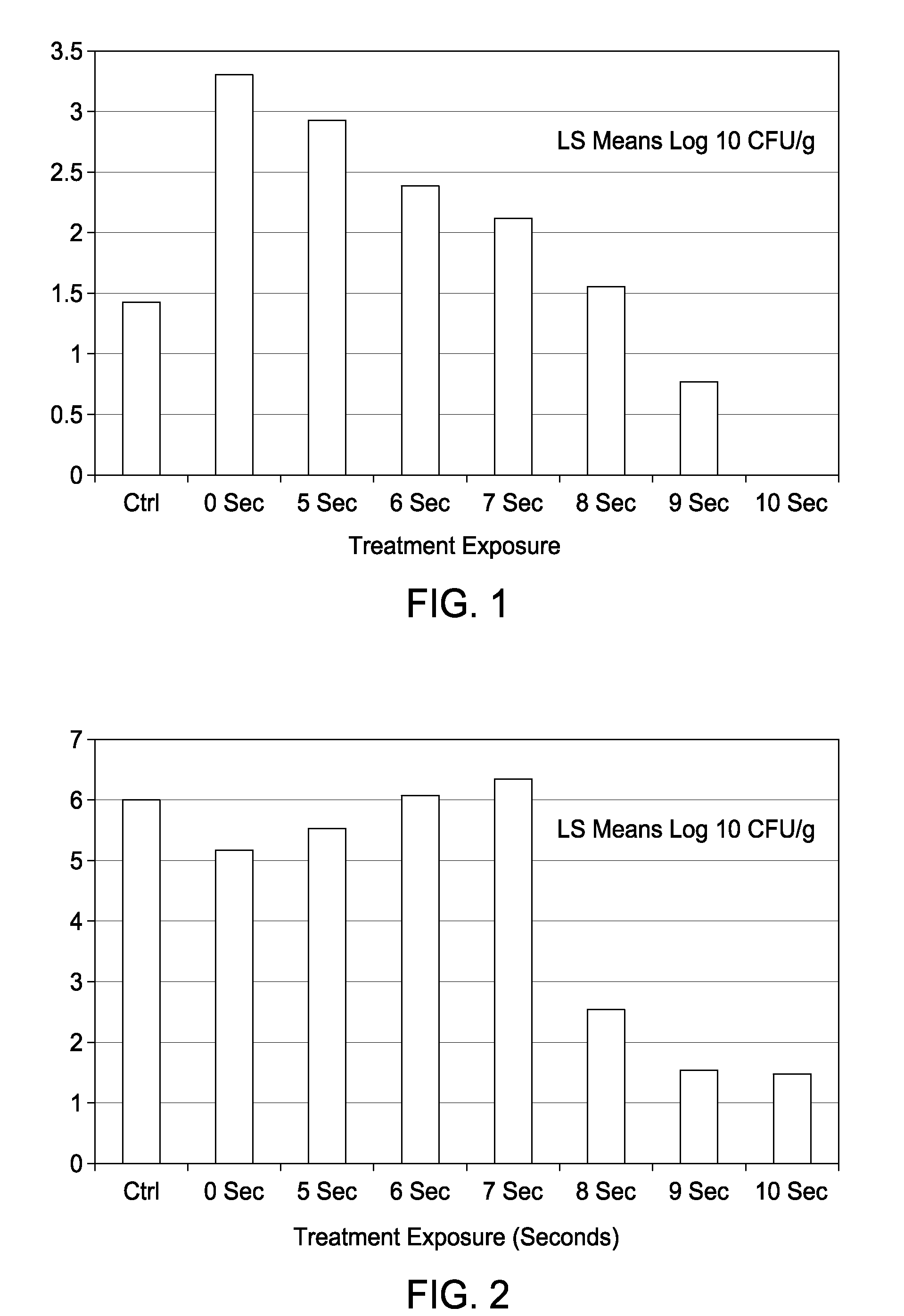Method and system for preserving food
a technology of food preservation and method, applied in the field of food preservation, can solve the problems of reducing preventing the growth of mold spores, and constant growth, and achieve the effects of reducing or inhibiting the microbiological activity within the container, improving the preservation of food, and prolonging the shelf life of foods
- Summary
- Abstract
- Description
- Claims
- Application Information
AI Technical Summary
Benefits of technology
Problems solved by technology
Method used
Image
Examples
example 1
Treatment of Bread
[0045]For example, bread inoculated with mold spores, and packaged was treated with various doses of a microwave treatment and stored at room temperature. Control samples of bread were not inoculated with mold or treated with the microwave, but were packaged and stored under the same parameters. Samples were taken over time to determine the total amount of mold surviving on the bread and to evaluate the impact of the treatment on the sensory properties over time. Duplicate samples were prepared to determine if visible mold growth occurred on the bread over time. Final results are summarized in this report.
[0046]Microbiological analysis of the bread was conducted at day 0 and 60 to determine the inhibition of mold populations when treated with different durations (in seconds) of microwave pasteurization. A total of 4 replications were used for this analysis for statistical soundness.
[0047]Concept of Microwave Pasteurization. Microwaves generate an electromagnetic fi...
example 2
Eggs
[0062]Microwaves have been shown to cause thermal as well as non-thermal destruction of pathogens such as Salmonella Enteritidis (SE), which is commonly found in shell eggs. The objective of this study was to determine if using microwave technology would cause detrimental quality or nutritional effects in shell eggs. Treatments were control and microwaved-treated. There were no differences in mineral content, fatty acid profile, Haugh units, broken out score, yolk index, emulsion stability, whole egg pH, and foaming capacity (P≧0.05). Albumen thermocoagulation was significantly higher in the microwave treatment (P≦0.05). At Day 0, no significant differences were observed for water activity readings (P≧0.05), by Day 30, there were no differences in water activities between the treatments. Foaming stability the microwave-treated eggs was significantly higher than control eggs (P≦0.05). The control eggs had significantly higher emulsion capacity than the microwave-treated eggs (P≦0...
PUM
 Login to View More
Login to View More Abstract
Description
Claims
Application Information
 Login to View More
Login to View More - R&D
- Intellectual Property
- Life Sciences
- Materials
- Tech Scout
- Unparalleled Data Quality
- Higher Quality Content
- 60% Fewer Hallucinations
Browse by: Latest US Patents, China's latest patents, Technical Efficacy Thesaurus, Application Domain, Technology Topic, Popular Technical Reports.
© 2025 PatSnap. All rights reserved.Legal|Privacy policy|Modern Slavery Act Transparency Statement|Sitemap|About US| Contact US: help@patsnap.com



